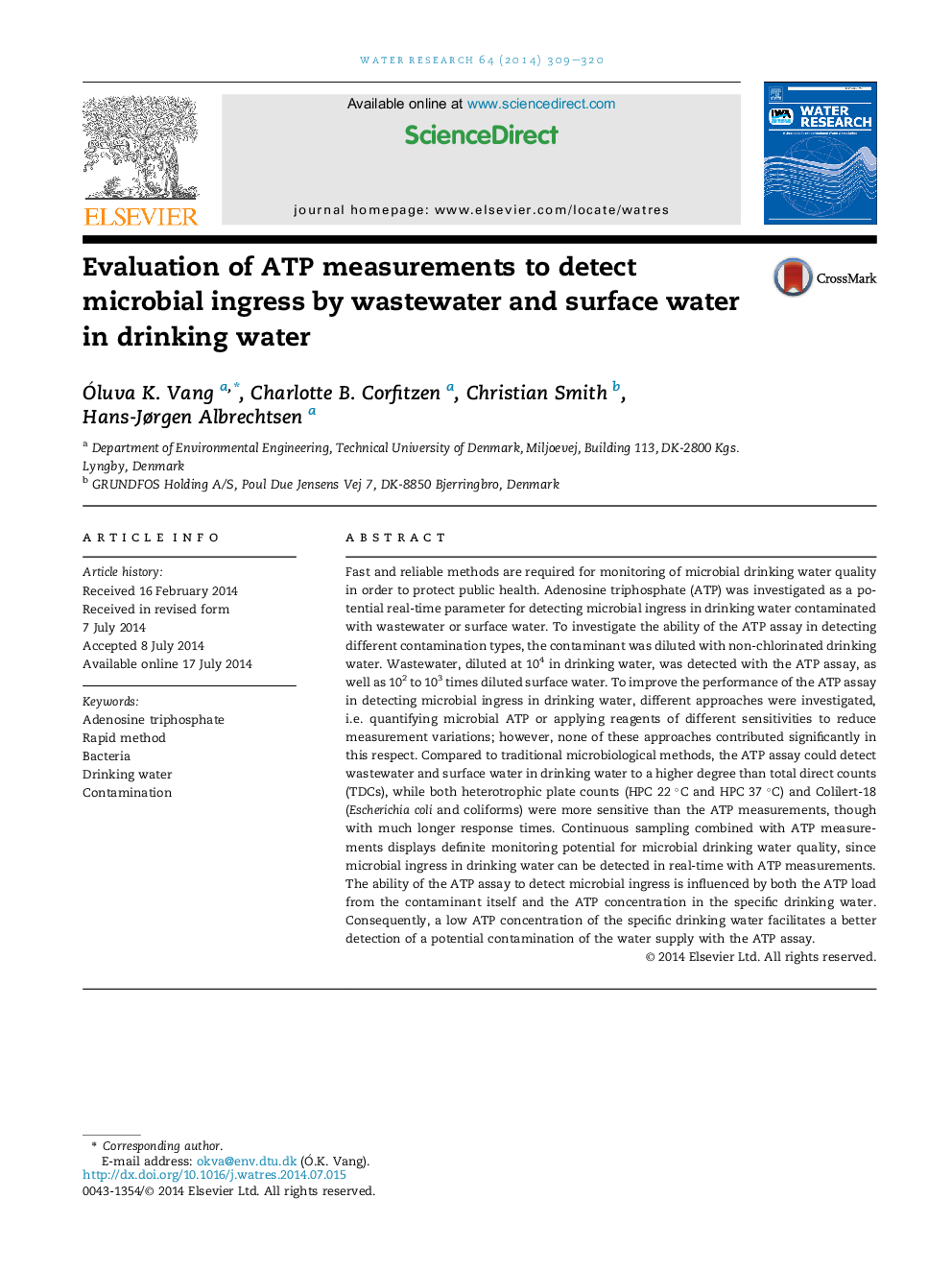| Article ID | Journal | Published Year | Pages | File Type |
|---|---|---|---|---|
| 4481450 | Water Research | 2014 | 12 Pages |
•The ATP assay detected up to a 104 dilution of waste water in drinking water.•The ATP assay detected a surface water dilution of 102 to 103 in drinking water.•The ATP assay was more efficient to detect contaminants than total direct counts.•The microbiological load of the specific contaminant influenced the efficiency of the ATP assay.•The ATP level of the specific type of drinking water influenced the efficiency of the ATP assay.
Fast and reliable methods are required for monitoring of microbial drinking water quality in order to protect public health. Adenosine triphosphate (ATP) was investigated as a potential real-time parameter for detecting microbial ingress in drinking water contaminated with wastewater or surface water. To investigate the ability of the ATP assay in detecting different contamination types, the contaminant was diluted with non-chlorinated drinking water. Wastewater, diluted at 104 in drinking water, was detected with the ATP assay, as well as 102 to 103 times diluted surface water. To improve the performance of the ATP assay in detecting microbial ingress in drinking water, different approaches were investigated, i.e. quantifying microbial ATP or applying reagents of different sensitivities to reduce measurement variations; however, none of these approaches contributed significantly in this respect. Compared to traditional microbiological methods, the ATP assay could detect wastewater and surface water in drinking water to a higher degree than total direct counts (TDCs), while both heterotrophic plate counts (HPC 22 °C and HPC 37 °C) and Colilert-18 (Escherichia coli and coliforms) were more sensitive than the ATP measurements, though with much longer response times. Continuous sampling combined with ATP measurements displays definite monitoring potential for microbial drinking water quality, since microbial ingress in drinking water can be detected in real-time with ATP measurements. The ability of the ATP assay to detect microbial ingress is influenced by both the ATP load from the contaminant itself and the ATP concentration in the specific drinking water. Consequently, a low ATP concentration of the specific drinking water facilitates a better detection of a potential contamination of the water supply with the ATP assay.
Graphical abstractFigure optionsDownload full-size imageDownload high-quality image (175 K)Download as PowerPoint slide
